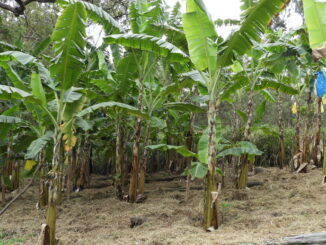
There’s nothing quite like the satisfaction of harvesting your own pineapples. The mere thought of plucking a ripe, homegrown Pineapple from your garden can put an extra spring in your step. The good news is our local climate and soil is ideal for Pineapple growing.
Starting your pineapple journey couldn’t be more cost-effective, especially if you have a liking for pineapple. All you need to begin is a couple of pineapples, complete with their tops. Unscrew the tops carefully, and you’ll find an abundance of helpful tutorials on platforms like YouTube. Prepare your chosen spot by digging a hole, adding a touch of nutrient-rich compost, and then carefully planting the pineapple top. It’s crucial to remove the lower section of prickly leaves, exposing small white bumps where the roots will soon emerge. To boost their initial root development, some gardeners prefer to let the crowns dry in the shade for about a week or place them in a bottle of water with the base submerged.
For the first 18 months to two years after planting, your pineapples may not exhibit substantial growth. Patience is key during this period. Pineapples don’t require excessive watering and overwatering can lead to root rot. Rainwater typically suffices for most of the year, but you may need to provide additional watering during the drier months.
Pineapples are known for their sun-loving nature. They can tolerate a bit of sunburn in these conditions and it’s worth noting that they can also be successfully grown in near full shade. Remarkably, pineapples can also flourish in large pots. Pineapples don’t require heavy feeding and thrive with minimal help. A light application of compost or organic chicken manure pellets a couple of times a year should suffice.
Expanding your pineapple garden is as simple as utilizing the fruit’s tops and pups. When you harvest a pineapple, don’t discard the top; instead, plant it to start a new pineapple plant. Furthermore, pineapples naturally produce pups, or side shoots, that can be separated from the mother plant and planted independently. With this simple propagation technique, your pineapple numbers will multiply rapidly, ensuring a bountiful supply of this tropical fruit.



